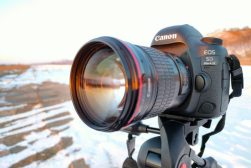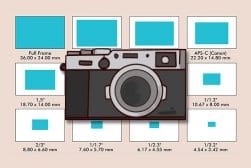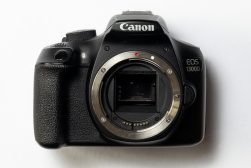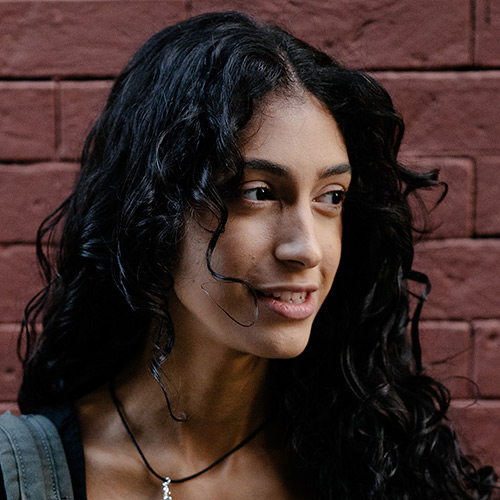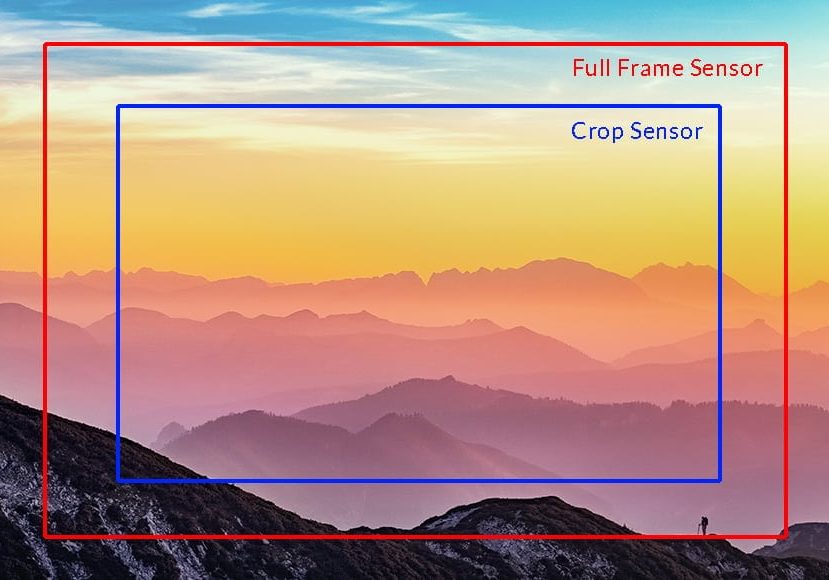
Full Frame vs Crop Sensor: Differences + Pros & Cons
Should you choose a camera with a full-frame or a crop sensor? Does it even matter? Why do most pros use full-frame? Find out more in our extensive guide.
‘Full frame’ and ‘crop’ refer to a camera’s sensor size. Full frame sensors share the same dimensions of 35mm film (24 x 36mm).
Crop sensors are anything smaller than 35mm, such as those found in APS-C camera sensors and Micro 4/3 cameras.
There’s no right or wrong when choosing a full frame or crop sensor camera – both are capable of producing excellent images, depending of course on the skill of the photographer!
Many professional photographers choose to use crop sensor cameras. Similarly, many amateur photographers use full frame cameras.
It’s virtually impossible to distinguish between the image quality of a photograph shot in good light using a full frame or a crop sensor camera.
(It’s only when the light starts to drop that the advantages of a larger, 35mm sensor become more evident, especially in the realms of higher ISO photography.)
Let’s have a closer look at the advantages of each system.
What is a full frame camera?
A camera with a ‘full frame sensor’ has a format that is the same size as 35mm film (36 mm × 24 mm). Historically, 35mm film was considered a relatively small format, but in the digital age, a full frame sensor is typically the largest popular ‘consumer’ format.
Full Frame Advantages
1. Better Low Light Performance
The biggest difference between full frame sensors and crop sensors is size, and that makes all the difference when it comes to dim lighting.
The sensor in a full frame camera is larger and captures more light. In addition, the pixels are also larger.
This not only helps your camera’s overall performance in low light (i.e. the autofocus doesn’t have to hunt), it also helps capture higher quality images in general.
This can especially be seen at higher ISOs. Full frame images will have a much higher dynamic range but far less digital noise.
In most cases, you’ll see a 1- or 2-stop improvement in high ISO performance when comparing a full frame sensor with a crop sensor.
That being said, many of the newer models of APS-C cameras have a much improved ISO performance. They also have very aggressive noise reduction, which helps produce less gritty images from the camera in low light.
If you’re used to shooting on an even smaller sensor (like a smartphone), you might be quite impressed with the low light performance of some of the higher-end crop sensor cameras.
2. Better Dynamic Range And Color Depth


The greater size and larger amount of pixels in full frame sensors create a higher resolution in your images.
Higher resolution means better image quality, both in terms of dynamic range and color depth. Depending on the quality of your lens, it will also bring out more detail in your images.
(As you can see in the image above which was shot on a full-frame DLSR, there’s a tremendous amount of shadow recovery possible in post-production.)
Even when a full-frame camera and crop sensor camera have the same resolution, the full-frame camera’s overall image quality will beat out a crop sensor camera’s every time.
Practically speaking, you’ll see this mostly within the tonal range of the shadows and highlights.
If you’re shooting in Raw, this gives you a whole lot more flexibility in post-processing, as it’s much easier to recover both highlights and shadows.
3. Shallower Depth of Field
Full frame sensors also have a shallower depth of field than crop sensors. This is because a larger sensor requires a longer focal length to create the same field of view you’d get with a crop sensor camera.
How Much Do You REALLY Know About Photography?! 🤔
Test your photography knowledge with this quick quiz!
See how much you really know about photography...

That additional focal length creates a shallower depth of field.
If you’re a portrait photographer, this can make a bit of a difference. The bokeh that comes from a full frame sensor + fast lens will be more visually appealing than the equivalent with a crop sensor.
4. Less Distortion at Wide Angles
The innate wider angle of full-frame sensors makes for less distortion when using wide-angle lenses. For those who primarily shoot landscapes, architecture, or interiors, a full frame camera may well be the better choice.
It’s also easier to use tilt/shift lenses with larger sensors.
Crop Sensor Advantages

Left: Crop Sensor Sony a6400 | Right: Full Frame Sony a7II
1. More Focal Reach
Sensor size doesn’t always work against you. There’s a crop factor when using cameras with an APS-C sensor, and this difference increases your effective focal reach.
For example, on a full frame camera, a 50mm lens will be simply that – 50mm. On a crop sensor camera, however, the field of view will look bit more on the telephoto side of things.
To figure out what the equivalent focal length, you’ll need to figure out your camera’s crop factor and then multiply it by the focal length of the lens.
(Note: the actual focal length of the lens doesn’t change – just the apparent focal reach. What actually changes is the field of view that your sensor sees.)
On an APS-C Canon, the crop factor is 1.6x. That means that a 50mm lens effectively acts like 80mm when used with that camera body. The same is true of telephoto lenses. (On a Nikon, the multiplication factor is 1.5x.)
Think about it – on a Canon crop frame camera such as the Canon 7D, your Canon 70-200mm f/2.8 lens basically becomes a whopping 112-320mm. Nice!
2. Less expensive
Perhaps one of the biggest benefits to using a crop sensor DSLR/mirrorless camera is that they’re not nearly as expensive as full frame DSLRs/mirrorless cameras.
Believe it or not, manufacturing a full frame sensor can cost almost twenty times what it takes to make a crop sensor. That’s definitely reflected in the retail prices!
Considering the fact that many high-end crop sensor cameras can provide photo quality similar to that of full-frame cameras – at least in good light – it might be well worth saving the money.
This goes for lenses as well as the camera body itself. There are plenty of lenses made just for crop sensor cameras that are far more affordable than their full frame cousins, yet perform quite well.
Here’s an example of the money difference:
Many professional sports photographers use the Canon 1D X paired with a 300mm or 400mm low light lens. This setup retails upwards of $15,000.
Choosing a decent Canon crop sensor DSLR and pairing it with a standard 70-200mm 2.8 lenses will still give you decent quality, and for something more like $2000-$5000.
If you’re a pro, the difference in performance and image quality – especially at night – will probably make it worth the extra $$. But if you’re an amateur or enthusiast, it probably makes more sense to go with the more affordable setup.
3. Smaller and More Compact
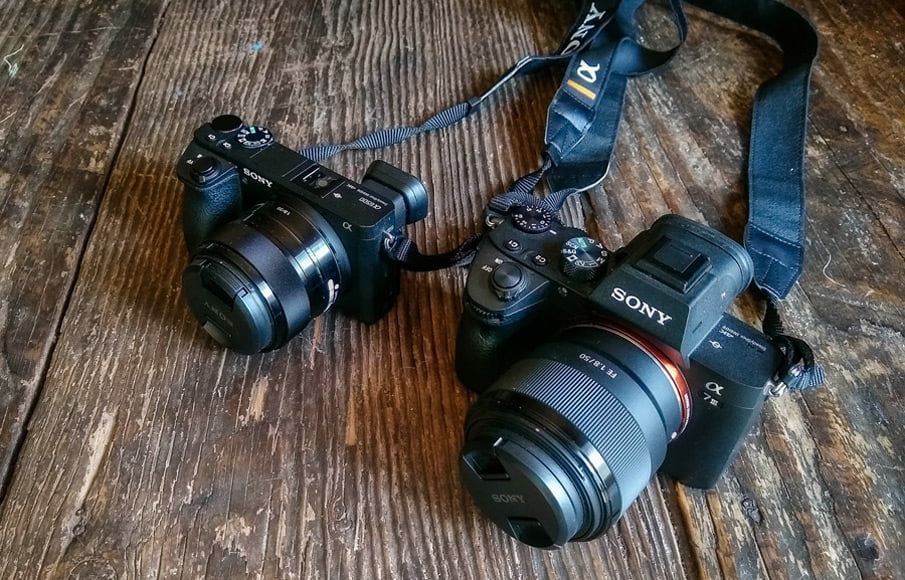
The form factor of this Sony a6500 is quite a bit smaller than its full-frame big brother, the Sony A7 III. The a6500 with a prime lens will fit easily in a standard-sized purse. The A7III…not so much.
If you frequently travel, camera size probably makes a big difference, both in terms of what you can pack in your luggage and interns of comfort when hauling your camera kit around. That’s where most crop sensor cameras really win.
Smaller sensors mean smaller camera bodies. Smaller camera bodies generally mean smaller lenses (if you buy lenses meant just for APS-C cameras). Lenses meant for full frame cameras tend to have more glass elements and are larger and heavier.
Of course, you can use a full-frame lens on your crop sensor camera, but it’ll probably be bigger than its APS-C equivalent lens.
This may not be a big deal for a studio photographer, but if you carry your kit on your body for much of the day, it can make a significant difference.
4. Faster Frame Rate in Burst Mode
Because crop sensor cameras have less information to record, they often have a faster burst mode than full frame cameras, at least in the DSLR world.
Smaller images also mean less lag time when saving images to the memory card.
Paired with the crop factor increasing your effective focal reach, this can add some extra sauce for sports photographers and others who do a lot of action photography.
Frequently Asked Questions
Is full frame really better than crop?
In some circumstances ,a full frame camera is definitely better than a crop sensor camera, particularly in terms of low light performance, high ISO performance, and dynamic range.
Is Full Frame sharper than crop?
Full frame cameras are not necessarily sharper than crop sensor cameras. Sharpness depends more on your lens quality and how it interacts with your camera than on sensor size alone.
Is buying a full frame camera worth it?
This depends on what you intend to use your camera for. If you regularly shoot in low light environments and/or need superior image quality no matter the time of day, then a full frame camera is worth it. If you generally shoot in good light and/or need a compact setup, a crop sensor camera may be a better choice.
Full Frame vs Crop Sensor: Final Words
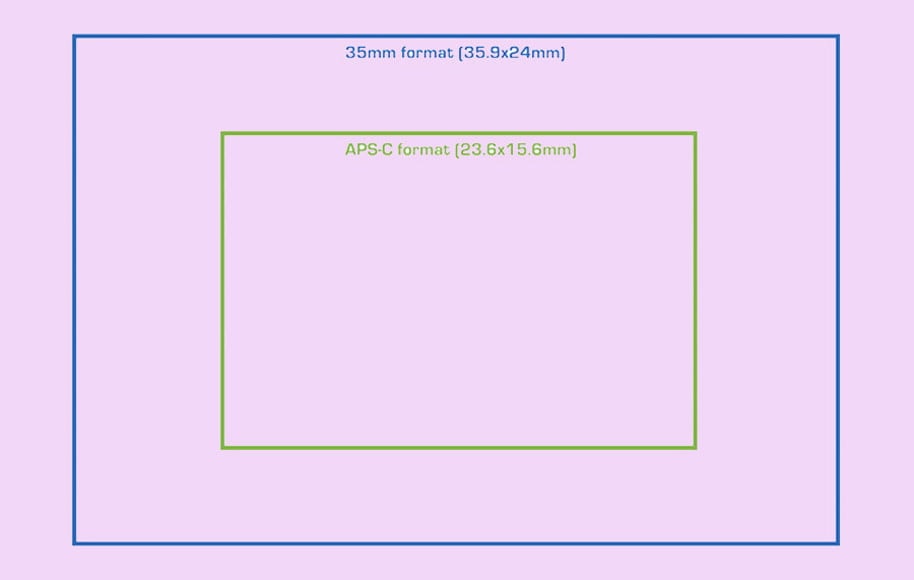
Here you can see the size difference between a full frame 35mm format sensor and a standard APS-C crop sensor.
In the end, which camera you choose will really depend on what your budget is and what style of photography you tend towards.
If you tend to need a lot of focal reach, a high-end crop sensor camera can be an excellent choice. It’s also a great option if you’re a wilderness, travel, or street photographer who needs a setup with a low profile.
Crop sensor cameras are also a better choice if you don’t want to spend a lot of money. You can either invest in full frame lenses as you go so you can upgrade later, or take advantage of the savings of only buying crop sensor gear.
If you shoot in low light situations, tend to use wide-angle lenses, and/or really need your image quality to be top-notch, then a full frame camera is a better choice.
Excellent full-frame mirrorless cameras have really come down in price over the last few years, and you can generally get something like the Sony A7III for less than $2000.
Whichever you choose, learn your camera well, and you’ll get excellent images either way.
What do you think? Which works better for you?

Check out these 8 essential tools to help you succeed as a professional photographer.
Includes limited-time discounts.





